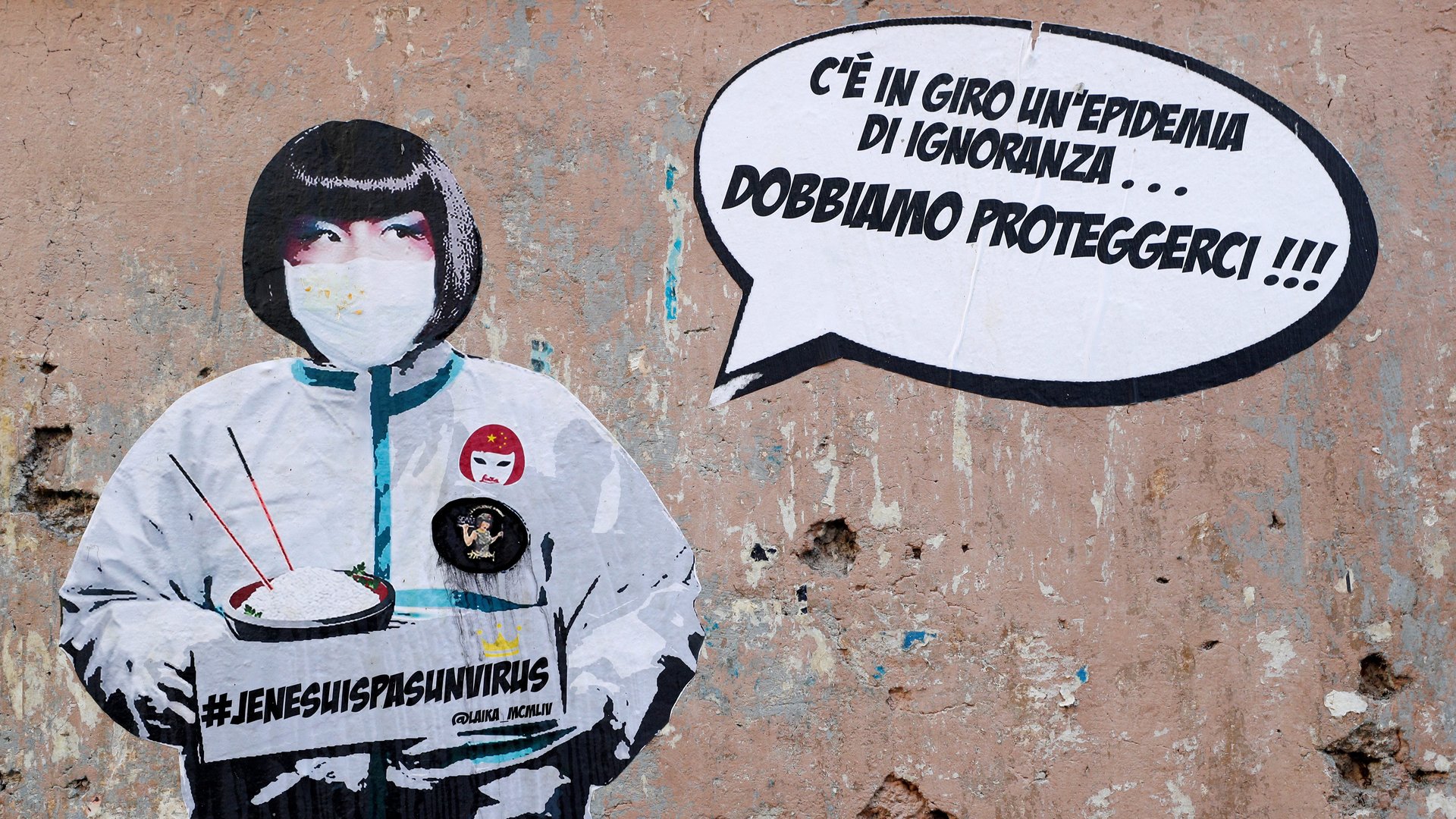Hysteria over coronavirus in Italy is reminiscent of the black death
The largest European outbreak of coronavirus is now in Italy, where it has infected more than 150 people, and killed six. In response, the government has quarantined 11 towns, shuttered schools, called off football games, and advised citizens to avoid leaving home altogether. Frantic citizens preparing for the worst have emptied grocery stores.


The largest European outbreak of coronavirus is now in Italy, where it has infected more than 150 people, and killed six. In response, the government has quarantined 11 towns, shuttered schools, called off football games, and advised citizens to avoid leaving home altogether. Frantic citizens preparing for the worst have emptied grocery stores.
Alarm over the disease is fueling hysteria and discrimination. A panicked search for the so-called patient zero—the first to bring the virus into the country—is being described by the Italian media as a “hunt.” Briefly authorities thought they identified the culprit, a man who had recently traveled to China. But all tests on him turned out negative.
Chinese and Asian communities have been targeted by boycotts, threats, and even violent attacks. Matteo Salvini, the leader of the country’s far-right political party, called for an end to all travel between Italy and China. And then, in a non sequitur, also called for closing harbors to migrants from African countries too.
Prejudice against Chinese communities is a problem the world over. In the United States, for instance, residents are avoiding restaurants in the Chinatowns of major cities. But Italy is especially fertile ground for this kind of racism, and the way people are reacting to the epidemic brings to mind an episode of Italian history from hundreds of years ago, in the very same areas that are now on lockdown: the plague.
At the turn of the 17th century, the plague tore across Italy. And nowhere was the hysteria more hysterical than in Milan, mostly due to an old conspiracy theory dating back to the the 1300s that nefarious people deliberately spread disease through ointments and powders they would surreptitiously spread on people, doors, and walls. These people were called untori, which can be roughly translated as “anointers,” and they were targeted by mobs.
While there was no truth to it, the accusation was a powerful one: The first to be targeted in the mid-14th century were Jewish communities. Europeans accused Jews of trying to kill all Christians in Europe by spreading the disease. Not even a proclamation by the Pope that Jewish people were not to blame managed to stop the attacks.
Less than two centuries later, the plague reached Milan. Erroneous bulletins and proclamations (the fake news of the time) spread rumors that people were going around with vials filled with plague-spreading oils. Accusing someone of being an untore became a powerful weapon against a personal enemy. The call to beat up an untore, “Dagli! All’untore!” became so ubiquitous it is still used in common Italian parlance to attack someone for an invented reason.
This is a time Italians should be familiar with, as it is chronicled in a famous novel, Alessandro Manzoni’s 1828 I Promessi Sposi (The Betrothed, link in Italian), which is a cornerstone of Italian literature—and a mainstay of the Italian school curriculum. In that novel, as well as in his 1840 essay Storia della Colonna Infame (The story of the infamous column), Manzoni writes about the collective hysteria that took hold during the time of the plague.
It appears the Italians who are taught this history are now doomed to repeat it. Much like the Jewish communities of the 14th century and the imagined utore of 17th, Asians in Italy are now the target of discrimination and attack in the 21st.
And so Manzoni’s words ring true yet again:
“Suspicion and exasperation, when they aren’t stopped by reason and charity, have the sad characteristic of making people think that the least lucky are culprits, on the basis of the vaguest hints and most thoughtless claims,” he wrote.